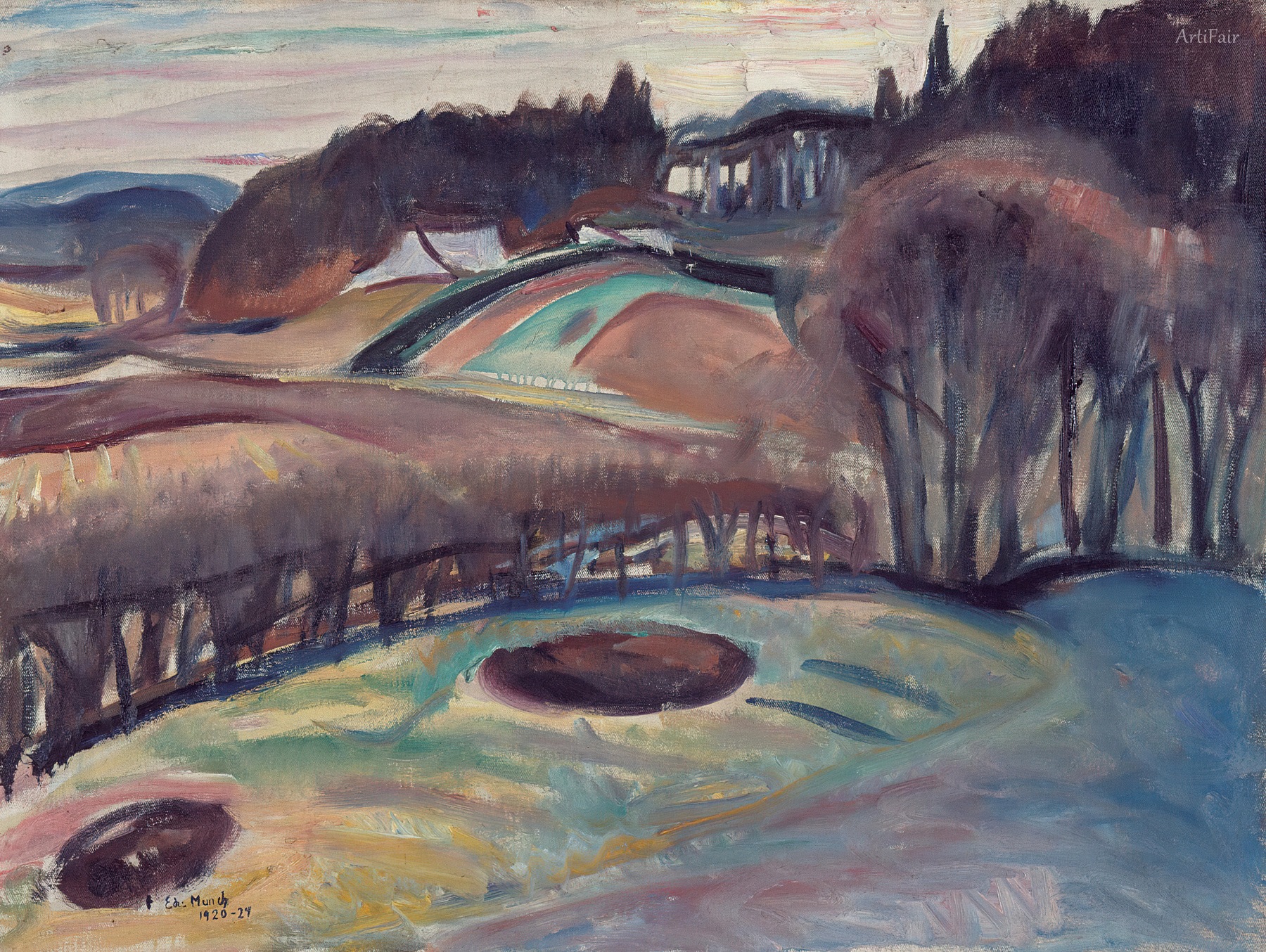
Art Appreciation
In this intriguing piece, the landscape unfolds with a palpable sense of movement. Edvard Munch, known for capturing emotional depth, employs swirling forms that suggest the gentle undulation of the land. The fields seem to breathe and pulse with life, enveloped in rich, earthy tones combined with subtle hints of pastel colors. The foreground, with its enigmatic circular forms, invites contemplation; they appear like ancient markers, hinting at stories long past or perhaps seeds waiting for spring's embrace. The hills in the background, lined with trees that sway gracefully, evoke a feeling of serenity, almost as if they are guardians watching over the land.
As I absorb the scene, the color palette plays a crucial role in influencing my emotions. The warm ochres and muted greens balance each other, while the soft blues and purples hint at the tranquility of twilight. Munch's strokes, expressive and animated, imbue the landscape with a certain dynamism – it feels alive, almost vibrating with energy. This artwork resonates not just as a portrayal of nature, but as a reflection of emotional states; the interplay of hues evokes the invigorating essence of spring, awakening hope and renewal. In its historical context, created in the aftermath of World War I, this piece might symbolize a longing for peace and rebirth, a sentiment that resonates with viewers even today.